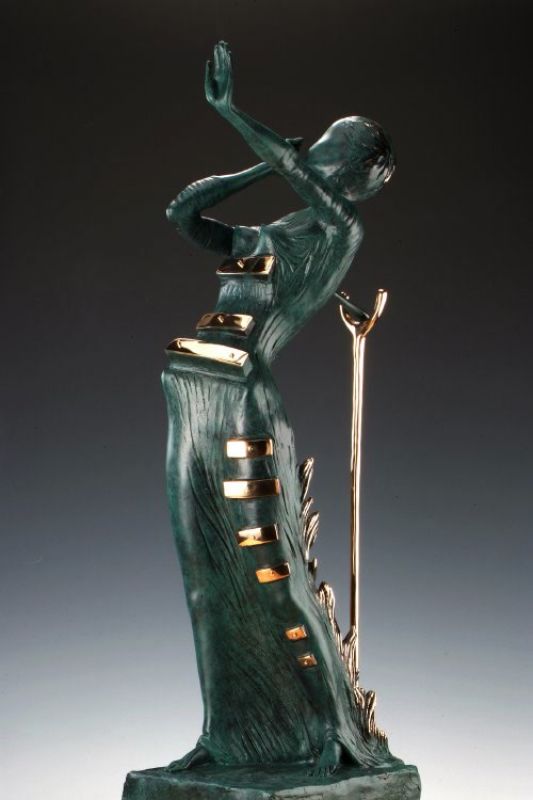Dali
Woman Aflame
Bronze, 84 cm
Chat with us on WhatsApp
About the artwork
This sculpture recalls Dalí’s 1937 oil painting Burning Giraffe, and unites two of his favorite motifs: female figure with drawers, and fire. The female figure here is composed largely of flames. These inextinguishable flames represent burning passion spreading from the feet upwards. Rising flames modelled in bronze give the impression that the whole figure is consumed by a fire that seems to have a life of its own. The woman’s physical appearance acquires a new perspective: crutches support her arched body and she is compartmentalized by drawers. Influenced by Freud’s theories, drawers were used by Dalí to symbolize the unconscious. As Dalí once said “The human body is full of secret drawers that can only be opened by psychoanalysis”. Aligning the figure’s torso and front leg, these partly opened drawers represent concealed sexuality of women. They act as an “entrance” into a woman’s interior world and represent our deepest desires and the mystery of hidden secrets. The faceless figure represents all women, her beauty arising not merely from her sensuous form, but from a sense of inner mystery that seems to derive as much from what she chooses to withhold as to reveal.
About the artist
Born on May 11, 1904, in Figueres, Spain, Salvador Dalí’s
eccentric nature and talent for self-promotion made him the most famous
representative of the surrealist movement and one of the most widely recognised
artists in the world. Identified as an artistic prodigy from a tender age, Dalí attended the drawing school at the Colegio de Hermanos Maristas and the
Instituto in Figueres, Spain in 1916. In 1922, he enrolled in the Academia de
San Fernando in Madrid and received recognition during his first solo show
held in Barcelona in 1925. Dalí became internationally known after the third
annual Carnegie International Exhibition in Pittsburgh in 1928 and grew to
immense notoriety and fame. Today, his sculptures and paintings are exhibited
in the most prestigious museums in the world and part of many coveted private
and public collections.
Go to Dali's profile ›


